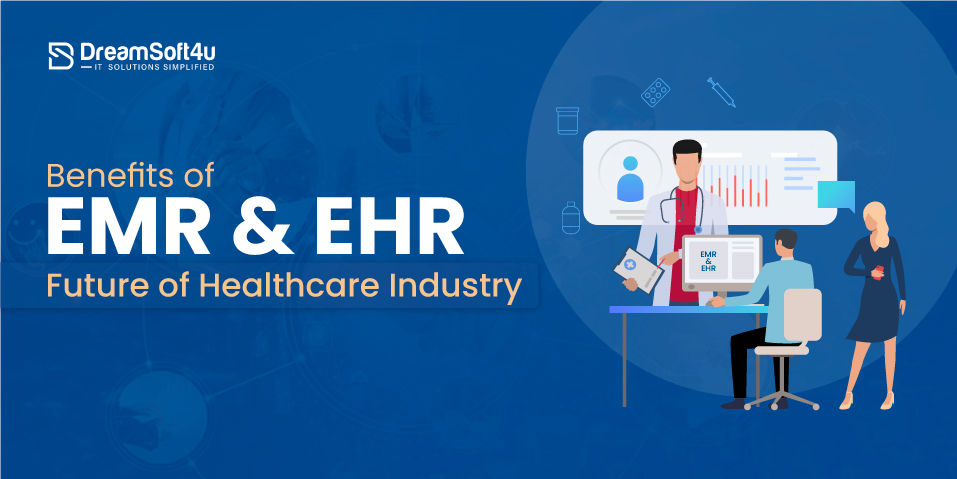Electronic Medical Records (EMR) is an electronic form of Medical Software for client records that allows clinics to track patient data across a health information system easily. This data is tracked across a health information system, such as a hospital, to allow for easier follow-up and data access to the patient data. This quick and easy process can increase the quality of care provided to the patient and the patient’s quality of life. Additnally, explore the benefits of EMR for your business.
As EMRs are introduced into clinics and hospitals worldwide, you will need to consider the advantages they provide for your institution. There will be pitfalls before successful implementation, and this must be considered prior to settling on a particular EMR application. Overall, better quality of care and life for the patient is always the end goal for a medical provider, and EMRs will assist with that goal.
Table of Contents
ToggleWhat is EMR?
“EMRs are digital records that providers use to store information about a patient’s health. They provide interfaces and functionalities to hospitals, big and small.”
The healthcare sector is constantly evolving and one major change in recent years has been an increased reliance on digital health records, including AI assistance. Digital health records require a lot of data to be created, processed, updated and stored, which is where AI comes into play. EMR benefits in managing insurance claims on behalf off customers’ medical needs and daily physician tasks.
They also allow clinics to synchronize with changes in reimbursement for ICD-10, HIPAA 5010 and other meaningful use standards.
EMR is mainly composed of a patient’s medical history, doctor’s notes and diagnosis etc. The records with standard clinical and medical data from their physician’s office are used to diagnose & treat them.
Doctors have been keeping a record of the patient’s medical history for many years. The evolution of Electronic Medical Records started in the 1960s when physicians began documenting problems and treatments instead of recording just their treatments.
This practice allows third-party vendors to seamlessly check diagnoses. It is one of the best benefits of EMR as computers and the internet became popular, and digital transfer of medical records became necessary.
What is EHR?
The purpose of EHRs is to consolidate a patient’s medical records and allow authorized users to access them in real-time. They are updated patient records that can be accessed in digital format by authorized users. Additionally, you will also understand the benefits of EHR.
Clinical Notes contain a wealth of important patient data. This includes details about their medical history, medications, allergies, radiologist images, treatment plans and lab results. It also gives doctors tools to help them make decisions about what kind of care the patient will need.
Differences Between EMR and EHR
When you’re choosing an EHR vs EMR for your business in term’s of benefits, it’s important to remember that they overlap in some ways but also have various differences. Some features may be more useful for one system than the other, so take the time to explore them both!
An EMR is like a complete journal of someone’s health, while an EHR is how all that information can be shared with other clinics, institutions, and providers.
Electronic medical records (EMR) contain comprehensive patient data and can be shared across clinics, health institutions or authorized providers. EHR takes the same data and makes it available to authorized providers across clinics and health institutions.
Not only are they used differently, but their goals also differ. Single providers use EMR to help with treatment and diagnosis, while the other allows multiple providers to see records. Both EMR and EHR have their benefits. Some user consider benefits of EMR on priority while some consider EHR.
DreamSoft4u Since 2003
Get your free quote by the top professionals.
Benefits of EMR
1. Save Paper Document Management & Storage Costs
The estimated cost of creating, tracking and maintaining paper charts is $8 per record compared to $1 per year per electronic record. The paperless office practice saves staff time by gaining immediate EMR access to any chart with less wasted time spent filing, searching for, pulling charts and shuffling paper notes.
Nursing home software documentation with electronic medical records eliminates staff time deciphering illegible notes. Transforming how records are created (transcription), stored and retrieved with EMR software development requires fewer staff to perform these tasks.
2. Reduce Malpractice Insurance
Liability insurers increasingly recognize EMR as one important method of reducing liability and exposure. Electronic drug regimen review improves safety by reducing medication errors. Some offer significant discounts to those physicians using an EMR. Improved documentation increases accuracy, reduces medical errors and record auditing with improved legibility, quality of patient care and safety.
Read Also: EHR Checklist-Find the Best EHR for Your Practice
3. Participate in Pay-For-Performance Programs
The old adage if you cannot monitor it you cannot manage it applies here. Pay-for-Performance (P4P) programs offer bonuses for demonstrating better patient health outcomes and cost efficient care. EMR software technology is perfectly suited to assure adherence to strict quality control data. EMR reporting guidelines with substantial rewards for quality improvement.
4. Optimize Reimbursement
Automated charge capture with medical billing and coding software accurately documents the true work of each encounter and avoids unintentional down coding or upcoming. Combined with easy ICD-9 code searches and suggested E&M codes, the EMR returns the proper reimbursement for each visit or procedure. Accurate coding speeds up the claims process with fewer rejections and lower DAR.
Subsidies may also be available through hospitals or regional healthcare systems for EMR software vendor purchases meeting the following criteria:
- EMR can exchange data with other EMR software.
- EMR features e-prescribing functionality.
- Hospital does not restrict the EMR software interoperability.
5. Improved Health Outcomes
Integrated EMR system can significantly enhance patient safety. These systems can flag potential issues such as drug interactions and allergies, alerting doctors to possible dangers. By preventing harmful mistakes, they ensure more accurate and safer treatments. This proactive approach reduces risks and leads to better health outcomes for patients. In addition, when users can access all relevant information in one place it allows healthcare providers to make more informed decisions. Furthermore, it improves the quality of care patients receive.
Read More: Top 9 Common EHR Implementation Challenges
Benefit of EHR
1. Comprehensive View of the Patient
Providers should strive to have dynamic patient-centered records that track the care continuum over the person’s lifetime, in sickness and health. Having a single, continuous record for a patient provides a holistic view of overall health for better diagnosis and lifetime treatment.
2. Streamlined Workflows
EHRs increase productivity and efficiency while cutting down on paperwork. Patients and staff have fewer forms to fill out, leaving clinicians with more time to see patients. Support and maintanance team can help patients when it’s time for annual checkups or alert them as they approach milestones that require regular screenings. patient can fill the tracking, billing and insurance claims with timely while using EHR.
3. The Power of Data
Continuous data collection allows for greater personalization of care, enabling providers to address health issues preventively. Additionally, big data analytics and aggregated patient data may alert providers to larger health trends, such as potential outbreaks and prominent flu strains each season.
4. Greater Efficiency and Cost Savings
Digital records and integrated communication methods can significantly cut administrative costs. They can reduce the need for transcriptions, physical chart storage, coding, and claims management, facilitate care coordination, and reduce the time it takes for hard-copy communications among clinicians, labs, pharmacies, and health plans.
5. Reducing Errors
Digital records help track and standardize patient interactions, which can reduce mistakes. With digital notes, illegible handwriting in doctors’ notes or prescriptions is no longer a problem. This makes it easier to read and understand medical information. Coding for procedures or billing becomes simpler and more accurate. Additionally, integrated systems can flag drug interactions, allergies, and other potential dangers, helping to prevent harmful mistakes. This leads to safer and more reliable patient care.
Conclusion
EMR and EHR provide significant control in their sector, but both of them are one of the major parts of the healthcare industry. Therefore, if you are planning to integrate EMR or EHR systems in the healthcare domain, then it’s best to understand both the system and how it leverages doctors and patient care. It is necessary to choose an EMR system to start your business. Switching systems is costly and can lead to some pretty big headaches like loss of training time and money. Security improvements and proper implementation will hold more value in the future of EMR than the cost of switching systems. So finalzie which is preferable for you either benefits of EMR or EHR.
FAQs
Q1. What are EMR and EHR, and how do they differ?
EMR stores patient data within one healthcare organization, while EHR includes data from multiple providers, offering a comprehensive view of a patient’s health history.
Q2. What are the benefits of EHR for patient care?
There are multiple benefits of EHR that include up-to-date, and complete patient information, which helps doctors make better decisions and improves overall patient care.
Q3. What role do EMR and EHR play in enhancing patient safety?
They improve safety by ensuring accurate and legible records, alerting providers to potential issues like allergies or drug interactions, and facilitating timely interventions.
Q4. How do EMR and EHR contribute to cost savings in healthcare?
They streamline administrative tasks, reduce paperwork and storage costs, minimize duplicate tests, and improve billing accuracy, leading to overall operational efficiencies. Morover its important to understand the benefits of EMR to integrate in your healthcare app.
Q5. What is the future outlook for EMR and EHR in the healthcare industry?
The future promises enhanced interoperability, leveraging technologies like AI and machine learning for predictive analytics and personalized medicine, aiming for more efficient and effective patient care.










